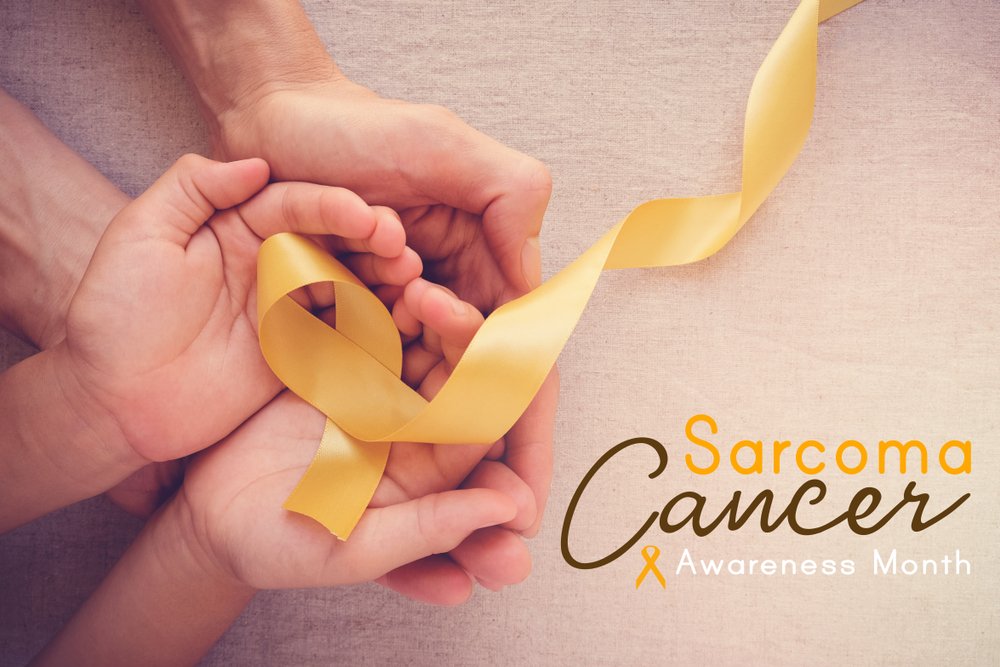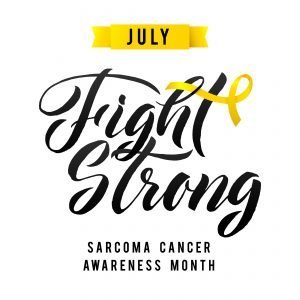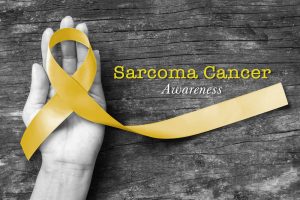Held each year during the month of July, Sarcoma Awareness Month strives to raise awareness about what is considered to be the “forgotten cancer.”
At Unicity Healthcare, we would like to provide some valuable information about what Sarcoma is, and how it can affect all people — including our elderly population.
What Is Sarcoma?
Sarcoma is a rare, soft-tissue cancer made up of many “subtypes” because it can arise from a variety of tissue structures (nerves, muscles, joints, bone, fat, blood vessels ; the body’s “connective tissues”). Additionally, Sarcoma may also occur in the bones. Basically because these tissues are found everywhere on the body, Sarcomas can arise anywhere.
According to www.sarcomalliance.org:
- Sarcoma is a cancer of the connective tissue, and can occur in any location in the body
- Sarcomas are divided into two main groups, bone sarcomas and soft tissue sarcomas
- About 13,000 people will be diagnosed with Sarcoma this year, and approximately 50% will be men and 50% will be women
- Sarcoma is more likely to affect children and young adults rather than older adults, and more than half of those diagnosed with the disease are under 60
- About 1% of people diagnosed with cancer are diagnosed with Sarcoma specifically
- At any one time, there are approximately 50,000 people struggling with Sarcoma
Sarcoma is most often found in the arms and legs, where the majority of connective tissues are located, but it can occur virtually anywhere. Because the disease often starts deep in the body, it may not be noticeable until a large lump or bump appears — and at this point the cancer may be difficult to treat.
Sarcomas are categorized as one of the following:
- Soft tissue sarcomas form in cartilage, fat, muscle, blood vessels, tendons, nerves, and around joints.
- Osteosarcomas develop in bone; liposarcomas form in fat;
- rhabdomyosarcomas form in muscle; and
- Ewing sarcomas form in bone and soft tissue.
Bone and joint cancer is most frequently diagnosed among teenagers, while soft tissue cancers typically affect those 55 years or older.
Possible Causes:
Unfortunately, scientists do not fully understand why some people develop sarcomas while the vast majority do not. However, by identifying common characteristics in groups with unusually high occurrence rates, researchers have been able to single out some indicators that may play a role in causing sarcomas.
The causes behind sarcoma are unknown, but there are some known risk factors. For instance, exposure to phenoxyacetic acid in herbicides or chlorophenols in wood preservatives may increase the risk. An unusual percentage of patients with a rare blood vessel tumor, angiosarcoma of the liver, for example, have been exposed to vinyl chloride in their work. This substance is used in the manufacture of certain plastics. High doses of radiation are also known to cause sarcomas in some people, as are certain rare genetic alterations.
The following inherited diseases are also associated with an increase soft tissue sarcoma risk:
- Li-Fraumeni syndrome, which is associated with alterations in the p53 gene
- Von Recklinghausen’s disease (neurofibromatosis), which is associated with alterations in the NF1 gene
Studies have focused on genetic alterations that may lead to the development of sarcomas. Scientists have also found a small number of families in which more than one member in the same generation has developed sarcoma. Sarcomas within families may be related to a rare inherited genetic alteration. However, in the vast majority of cases, sarcoma is a completely random event in a family’s cancer history.
Diagnosis:
Although a lot of the lumps and bumps we get are benign, people should have them looked at by a doctor at an early stage in case it is sarcoma. Because sarcomas are difficult to distinguish from other cancers when they are found within organs, their occurrence is probably underestimated, according to the National Cancer Institute.
In 2018, over 13,000 cases of soft tissue sarcoma and 3,400 cases of bone sarcomas are expected to be diagnosed in the United States, according to data from the National Cancer Institute’s Surveillance, Epidemiology, and End Results Program (SEER).
The only reliable way to determine whether a tumor is benign or malignant is through a surgical biopsy. Therefore, all soft tissue and bone lumps that persist or grow should be biopsied. During this procedure, a doctor makes an incision or uses a special needle to remove a sample of tumor tissue, and a pathologist examines the tissue under a microscope. If cancer is present, the pathologist can usually determine the type of cancer and its grade.
Low-grade sarcomas, although cancerous, are unlikely to metastasize. High-grade sarcomas are more likely to spread to other parts of the body.
The five-year survival rate for soft tissue sarcomas is 50 percent, while the survival rate is 66 percent for bone sarcomas.
Treatment:
The Sarcoma Foundation of America (SFA) estimates that about 20 percent of sarcoma cases are curable by surgery while another 30 percent may be effectively treated with surgery, chemotherapy and/or radiation.
In general, treatment for sarcomas depends on the stage of the cancer. The stage of the sarcoma is based on the size and grade of the tumor, and whether the cancer has spread to the lymph nodes or other parts of the body (metastasized).
Surgery is the most common treatment for sarcomas. If possible, the doctor may remove the cancer and a safe margin of the healthy tissue around it. As much of the tumor is removed as possible, and radiation therapy and/or chemotherapy are given either before the surgery to shrink the tumor or after surgery to kill the remaining cancer cells.
Radiation therapy (treatment with high-dose x-rays) may be used either before surgery to shrink tumors or after surgery to kill any cancer cells that may have been left behind.
Chemotherapy (treatment with anticancer drugs) may be used with radiation therapy either before or after surgery to try to shrink the tumor or kill any remaining cancer cells. If the cancer has spread to other areas of the body, chemotherapy may be used to shrink tumors and reduce the pain and discomfort they cause, but is unlikely to eradicate the disease. The use of chemotherapy to prevent the spread of sarcomas has not been proven to be effective. Patients with sarcomas usually receive chemotherapy intravenously (injected into a blood vessel).
Doctors are conducting clinical trials in the hope of finding new, more effective treatments for sarcomas, and better ways to use current treatments.
Ways To Promote Sarcoma Awareness
- Since sarcoma is a rare cancer, many people are unfamiliar with the disease since they have not been affected personally. This July, take a moment to share a message via social media or speak with your friends and family about this relatively unknown condition.
- Spread sarcoma awareness through social media. Use the hashtags #curesarcoma #sarcomaawarenessmonth
- Make a donation in honor of Sarcoma Awareness Month
- Take part in the Race to Cure Sarcoma™ race series. The Race to Cure Sarcoma run/walk series held in the United States focuses on raising awareness and research funds for sarcoma. Organized by the Sarcoma Foundation of America (SFA), the Race to Cure Sarcoma™ is made up of family-friendly 5K run/walks held in cities across the nation. Last year, nearly 3,500 people participated in the Race to Cure Sarcoma™.
- Stay in touch with us on curesarcoma.org and our social media channels (Facebook, Twitter and Instagram)
- The Sarcoma Foundation of America provides regular news and information about the Sarcoma community.
As you can see, Sarcoma Awareness Month aims to further highlight the extraordinary challenges that sarcoma patients face, and provides information about the need for more sarcoma research and better sarcoma therapies.
Unicity Healthcare appreciates the opportunity to provide the above information, in order to bring further awareness to our community about this “forgotten cancer.”




